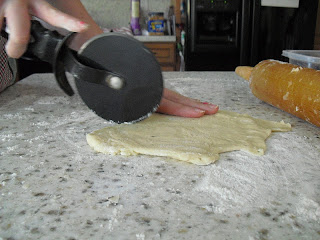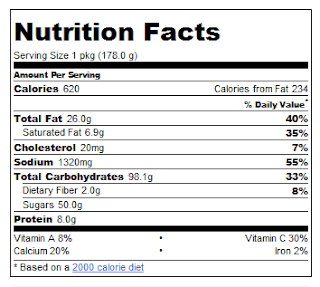What a journey this has been. I can not believe that we are about to complete our eleventh portfolio item. I swear it feels like just yesterday it was August. Where does the time go?
Baking bread is an ancient art. Every culture has a specific type of bread based food, on which its people have survived for thousands of years. Bread comes from the "Germanic root, and originally meant a piece or bit of a loaf, with loaf meaning the leavened, baked substance itself. Over time, loaf came to mean the intact baked mass, and bread took over loaf's original meaning" (McGee, Harold. On Food and Cooking: The Science and Lore of the Kitchen. New York: Scribner, 2004).
New developments in bread making have come with advances in science and technology. It is now easier and more acceptable for people from all kinds of life to take part in the art of bread baking. Today, about 85% of bread in the United States is made by 28,000 commercial bakers (source).
Changes in the recipes and the ingredients used in breads has become a common evolution. One of the most significant transformations regarding the white bread has been the addition of milk solids. Milk nutrients are added to the bread either through liquid milk, condensed milk, or powdered milk. The use of milk in bread has many advantages. The nutrients and chemical composition of milk improves "the color, texture, symmetry, and quality of the loaf, without appreciably affecting the cost per pound" (source). Additionally, the added milk in bread provides vital proteins for nutrition. In fact "bread made with milk has about ten percent protein, which contains all the amino acids now recognized as indispensable to life" (source).
Baking bread is an ancient art. Every culture has a specific type of bread based food, on which its people have survived for thousands of years. Bread comes from the "Germanic root, and originally meant a piece or bit of a loaf, with loaf meaning the leavened, baked substance itself. Over time, loaf came to mean the intact baked mass, and bread took over loaf's original meaning" (McGee, Harold. On Food and Cooking: The Science and Lore of the Kitchen. New York: Scribner, 2004).
New developments in bread making have come with advances in science and technology. It is now easier and more acceptable for people from all kinds of life to take part in the art of bread baking. Today, about 85% of bread in the United States is made by 28,000 commercial bakers (source).
Changes in the recipes and the ingredients used in breads has become a common evolution. One of the most significant transformations regarding the white bread has been the addition of milk solids. Milk nutrients are added to the bread either through liquid milk, condensed milk, or powdered milk. The use of milk in bread has many advantages. The nutrients and chemical composition of milk improves "the color, texture, symmetry, and quality of the loaf, without appreciably affecting the cost per pound" (source). Additionally, the added milk in bread provides vital proteins for nutrition. In fact "bread made with milk has about ten percent protein, which contains all the amino acids now recognized as indispensable to life" (source).
























